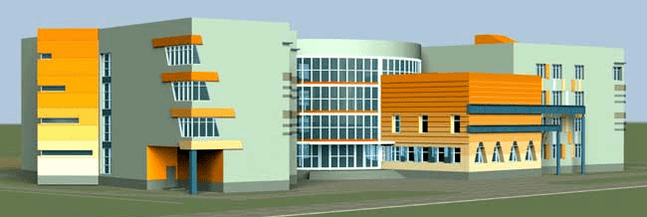
Energy saving in the enterprise - the main directions:
- Energy saving
- Reduction of heat and steam losses
- Reduction of losses in steam lines
Energy saving in the enterprise - Energy saving methods
- Selection of the optimal price category and revision of the terms of the energy supply contract
- Optimization of electric motors
- VFD installation
- Optimization of compressed air systems
Choosing the optimal price category for power supply
In total, there are 6 energy supply price categories from which businesses can obtain electricity from guaranteed suppliers.
All small businesses with an installed capacity of less than 670 kW fall into the first price category when contracting for automatic power supply.
All enterprises with an installed capacity of more than 670 kW automatically fall into the third price category.
The first and third price categories are not always the most optimal and cheapest energy supply category.
In some cases, switching to a different price category can reduce the cost of electricity by 5% -30%.
The topic of price categories is very broad, in our review of price categories, we explain in detail how to correctly calculate and select the energy supply price category.
In addition to price categories, we recommend that you look closely at other aspects of the power supply contract:
- voltage level,
- power,
- electricity transmission tariff.
In our review, you can learn about these and other methods to reduce energy costs.
Energy saving in the enterprise - Electric motors
It is necessary to take into account all the equipment that uses electric motors:
- pumps,
- compressors,
- fans,
- benches,
- production lines.
Electric motor management plan
The engine management plan should be an integral part of the plant's energy conservation program.
Such a plan will help implement a long-term energy-saving system for all electric motors in the enterprise.
The engine management plan ensures that failures and malfunctions do not occur and, if they do occur, will be resolved quickly and efficiently.
Steps to create an engine control plan:
- Take inventory of all engines in the enterprise.
- Create a list of engines with basic parameters, technical condition, service life.
- Prepare general instructions for repair work.
- Prepare instructions for preventive maintenance, lubrication and inspection.
- Create a safety backup of frequently used spare parts.
- Create a purchase specification for new engines.
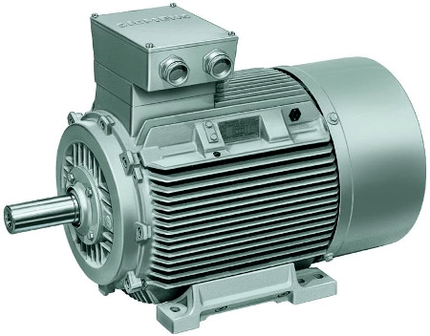
Wrapping of electric motors
In general, retrieving an old electric motor is cheaper than buying a new motor.
The electric motor must be replaced when the re-winding value is more than 60% of the value of a new motor.
Then everything will depend on how the retreat will be carried out.
If the work is carried out at the highest level, the engine will lose only 1% -2% of efficiency.
If the reverse winding is poorly carried out, the losses in the electric motor will increase by 5-10%.
Replacing an old electric motor with a new energy-saving one makes sense if the engine runs for more than 2, 000 hours a year.
The payback period for a new energy-saving engine will not exceed 1, 5 - 2 years.
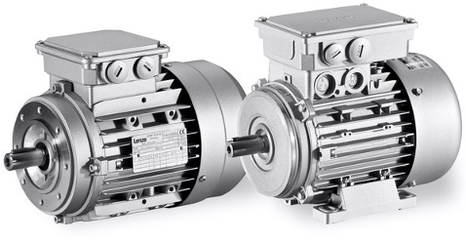
Energy savings in the enterprise by increasing the load factor
The load factor is the ratio of manpower to apparent power.
How efficiently energy is used.
The higher the load factor, the more efficient the use of electricity.
The electric motor works optimally at loads of 75% and higher.
Therefore, installing engines above the required power (for safety reasons) will not only be more expensive, but also inefficient in terms of energy consumption.
The load factor can be increased as follows:
- stopping of unloaded engines,
- Replacement of engines with less than 45% load for less powerful models,
- redistribution of load between existing electric motors.
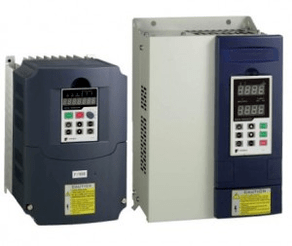
Variable frequency drive (VFD)
Installing variable frequency drives only makes sense for dynamic systems.
For example, installing a variable frequency drive in static systems that only involve lifting loads will not help and in most cases can be harmful.
VFD balances the load and speed of the engine, thus ensuring optimal power consumption.
VFD can reduce engine power consumption by a minimum of 5% and a maximum of 60%.
The repayment period for VFD is generally 1-3 years.
Optimization of compressed air systems
Compressed air is used in various fields.
In some enterprises, compressed air is the main consumer of electricity.
Compressed air is used in pneumatic devices and equipment, conveyors, automatic lines.
The use of compressed air is popular because it is a comfortable and safe source of energy.
But many people forget that compressed air is one of the most inefficient sources of energy - only 5% of the electricity used to produce compressed air is converted into useful work, and the remaining 95% goes to the pipe.
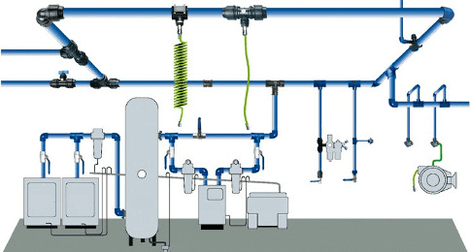
Energy saving in the enterprise - compressed air:
- Do not use compressed air to clean buildings.
- A 3% reduction in air temperature at the compressor inlet reduces energy consumption by 1%.
- For these technical processes, minimize compressed air pressure if possible. Reducing the pressure by 10% reduces energy consumption by 5%.
- Carry out regular inspections and repairs of compressor equipment and compressed air lines. One, even the smallest leak of compressed air, can sometimes reduce the efficiency of the equipment.
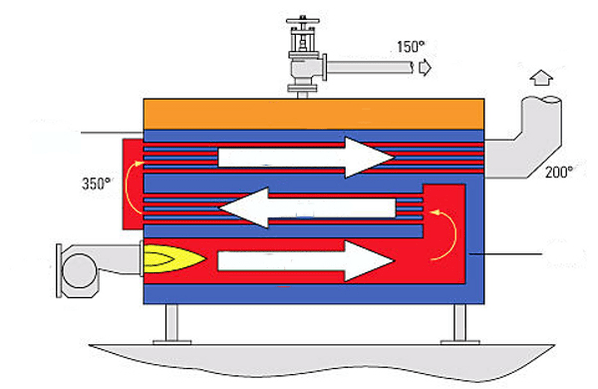
We save energy in the enterprise - heat and steam losses
Steam is often used in industry, especially in the textile, food and processing industries.
Increasing the efficiency of steam boilers and reusing the resulting heat can significantly reduce energy consumption in these plants.
Steam production
The boiler works most efficiently at full power.
Because the demand for steam can change over time, the boiler often operates below its optimal load.
The capacity of the installed boiler can be much higher than the needs of the enterprise due to reduced demand for the product or unrealized plans to expand production.
Boiler power may not be required due to developments in the production process or the application of energy saving measures.
In such cases, the boiler does not operate at full capacity or operates in short boot cycles.
Both of these conditions cause significant energy loss.
There are no simple and cheap solutions to this problem.
It is the easiest choiceInstall a "small" boiler that will work at full capacityat medium or low workload in the enterprise.
While this is not a cheap solution, the payback period for such an investment can be less than two years.
And in general, it is always more efficient to have several small boilers instead of each other, especially in enterprises with changing demand or significant seasonal fluctuations in heat and steam consumption.
Automatic adjustment system
If the enterprise has several boilers, then it makes sense to installautomatic system that regulates the load of boilers. . .
Automation responds to the need for steam in the plant, redistributes the load between the boilers, turns the boilers on or off, thereby significantly increasing the efficiency of the entire system.
Gate valve
Heat losses through the chimney can be very high in enterprises where boilers are regularly shut down due to reduced steam demand.
It is possible to prevent the loss of hot air through the chimneyby installing a gate valveclosing the pipe when the boiler is turned off.
Prevention and operation
When left unattended, burners and condensate return systems can quickly deteriorate or break down.
This can reduce the efficiency of the boiler by 20% -30%.
A simple maintenance program - to ensure maximum operation of all boiler components - will significantly increase work efficiency.
In practice, regular maintenance reduces the energy consumption of the boiler by 10%.
Insulation - heat loss from a properly insulated boiler surface must be less than 1%.
Extraction of soil and scale
In boiler pipes, the formation of a scale part inside the boiler must be constantly monitored and eliminated.
A layer of felt with a thickness of 0. 8 millimeters reduces heat transfer by 9. 5%, a layer with a thickness of 4. 5 millimeters reduces heat transfer by 69%!
Scale is created when calcium, magnesium and silicon are placed in the boiler heat exchanger.
1 millimeter thick scales increase energy consumption by 2%.
Dry and scale can be cleaned mechanically or with acids.
The formation of fog and scale can be detected by an increase in flue gas temperature or by visual inspection when the boiler is not working.
If the boiler runs on solid fuels (coal, peat, wood), the formation of soot and scale should be especially carefully monitored.
Gas boilers are less prone to soot problems.
Boiler blowing optimization
Boiler explosion is the discharge of boiler water to clean the water inside the boiler from impurities and salts.
The purpose of blowing the pot is to prevent or reduce the formation of scales.
Adequate explosion of the boiler can cause water to vaporize or sediment to form in the boiler.
Excessive exposure to air means loss of heat, water and chemicals.
The optimal blowing level depends on the type of boiler, the working pressure in the boiler, the preparation and quality of the water used.
The first thing to pay attention to is the preparation of water. If the water is well purified (low salt content), the blowing ratio can be 4%.
If there are foreign substances and salts in the water, the blowing rate will be -10%.
The automatic blowing system can also significantly reduce energy consumption.
The repayment period for such a system is generally 1-3 years.
Reduction of smoke emissions
Excessive smoke is often the result of air penetrating the boiler and chimney through leaks and holes.
This reduces heat transfer and increases the load on the compressor system.
Leaks and holes can be easily removed, you just need to conduct a visual inspection of the boiler and chimney.
Air regulation
The more air is used to burn fuel, the more heat is blown into the wind.
An amount of air slightly above the ideal stoichiometric fuel / air ratio is needed to reduce NOx emissions for safety reasons and depends on the type of fuel.
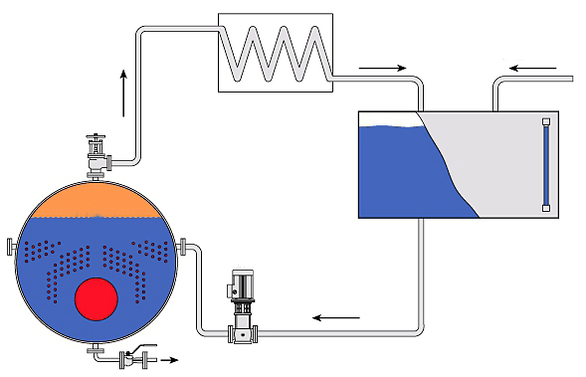
Boilers in poor technical condition can use up to 140% extra air, resulting in excessive chimney emissions.
An efficient gas burner needs 2% to 3% extra oxygen or 10-15% extra air to burn fuel without forming carbon monoxide.
The general rule is to increase boiler efficiency by 1% for every 15% reduction in additional air.
Therefore, the fuel / air ratio should be checked regularly.
This measure does not require any costs, but has a very good effect.
Smoke monitoring
The amount of oxygen in the flue gas is the sum of the extra air (added to increase safety and reduce emissions) and air leaking into the gas from the holes and leaks.
The presence of leaks and holes can be easily detected when a control system is installed for the amount of oxygen in the incoming air and flue gases.
It is possible to optimize the fuel / air ratio in the boiler using information on carbon monoxide and oxygen content.
The installation of a monitoring and analysis system for chimney waste generally pays for itself in less than a year.
Energy Saving in the Enterprise - Economist Installation
The heat from the flue gases can be used to heat the water entering the boiler.
The heated water enters the boiler and requires less heat to evaporate, thus saving fuel.
The efficiency of the boiler increases by 1% for every 22 ° C decrease in flue gas temperature.
The economist can reduce fuel consumption by 5-10% and give results in less than 2 years.
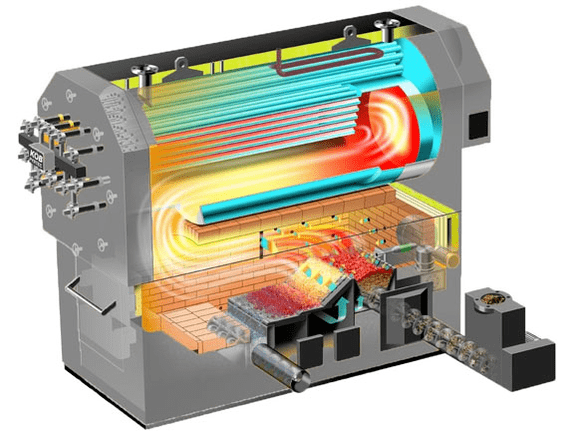
Heat exchanger to remove heat from the water and steam from the boiler blowing
The heat exchanger will help to recycle about 80% of the water and heat the steam from the boiler explosion.
This heating can be used to heat buildings or to heat the water that feeds the boiler.
Any boiler with a constant blowing rate of 5% or more is an excellent candidate for heat exchange.
If the inflation system does not work in a stable mode, it also makes sense to consider switching to a stable mode when installing a heat exchanger.
The average payback period for a heat exchanger will not exceed 1, 5 - 2 years.

Installation of condensate saver
Hot condensate can be returned to the boiler, thus saving energy and reducing the need for purified water.
Condensation saver can increase system efficiency by an additional 10%.
The installation of such an economizer should be carried out under the close supervision of specialists, taking into account all the nuances of such a system, the effect on the boiler and the chemical composition of the water.
The use of a system that returns condensate to the boiler usually pays for itself in 1-1, 5 years.
A system that directs condensate to a hot water source pays for itself in less than a year.
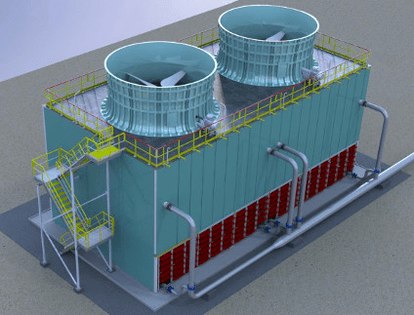
Cooling towers (cooling towers)
A cooling tower is a heat exchanger in which water is cooled by a stream of air.
In terms of energy efficiency, a cooling tower is a device that throws heat to the wind.
Energy saving potential in cooling towers:
- In some enterprises, it makes sense to completely abandon the cooling towers. There are many cases where heating is used to heat a room and at the same time it uses a cooling tower to dissipate heat. Installing a heat pump will solve the heating problem and reduce the use of the cooling tower at least partially.
- Installing electrical switches for cooling tower fans can reduce energy consumption by 40%.
- Replacing aluminum or iron fans with new fans (fiberglass and plastic molded) can reduce energy consumption by up to 30%.
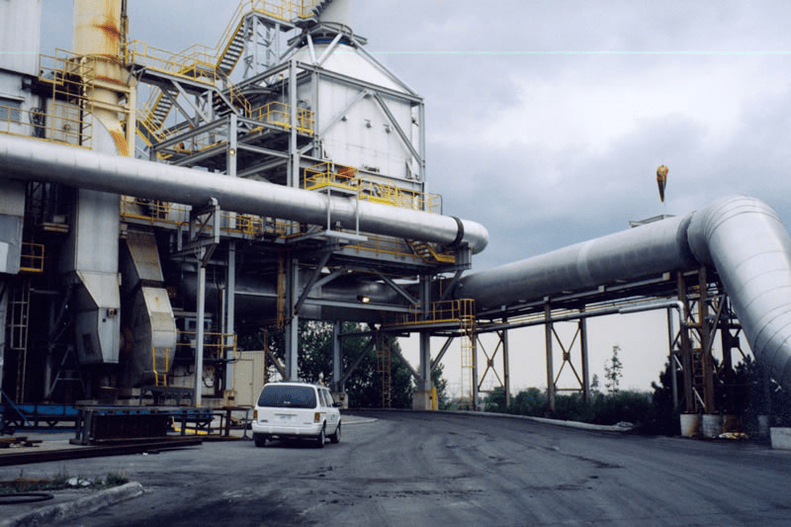
Reduction of losses in steam lines
Disconnection of ownerless Steam Lines
Steam needs and consumption are constantly changing.
This can lead to the use of only 20% -50% of the entire steam distribution system at full capacity, which inevitably leads to heat loss.
It is clear that optimizing or rebuilding the entire steam distribution system to meet new needs is very expensive and perhaps impossible.
However, identifying and shutting down difficult-to-use steam lines can be a very effective energy saving measure.
Energy saving in the enterprise - Thermal insulation of pipes
Insulated steam pipes can reduce energy losses by up to 90%.
This is one of the fastest energy savings in the steam distribution system.
The average payback period for the insulation of pipelines carrying steam or hot water is about 1 year.
Condensate pipes are 1, 5-2 years.
Monitoring of steam traps
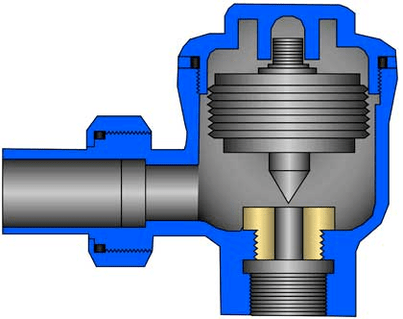
A simple monitoring program on the technical condition of steam traps can significantly reduce heat loss.
For example, if repairs are not carried out for 3-5 years, as a rule, about a third of the steam traps fail and allow steam to leak into the condensate drainage system.
In practice, more than 5% of steam traps in facilities with a monitoring program for steam traps are in poor condition.
The average payback period for replacing or maintaining a steam trap is less than six months.
The steam trap tracking program generally reduces steam losses by 10%.
Thermostatic steam traps
The use of modern thermostatic steam traps can reduce energy consumption and at the same time increase the reliability of the whole system.
These are the main advantages of thermostatic steam traps
- opens when the temperature approaches the saturated vapor level (+/- 2 C °),
- release non-condensing gases and after each opening
- is open at the start of the system, which allows it to warm up quickly.
In addition, steam traps are very reliable and can be used at a wide range of pressures.
Separation of steam traps
When not in use, you can reduce energy consumption by turning off the steam traps on overheated steam lines.
Eliminate steam leaks
A small-hole steam leak repair program can pay for itself in less than 3-4 months.
We must not forget that small leaks can permanently damage the system and go unnoticed for years.
Reuse of condensate and steam
When a steam trap removes condensate from the steam system, the pressure drop generates steam from that condensate.
This steam, along with condensate, can be used in a heat exchanger to heat feed water or air.
Most importantly, it is possible to use steam and condensate close to the point of release, as it can be very expensive to create a separate piping system to deliver it to the point of use.
























